
Tony Bennett left his heart in San Francisco. I left mine in Healdsburg, humming.
Sonoma County is one of the great wonders of the California wine world, with a land and climate of incredible diversity, fantastic vineyards, beautiful architecture and winemakers who are crafting amazing wines. Some would argue this is where fine wine of California all began.
Resting just west of the (more famous) Napa County, Sonoma County is made up several AVA valleys (the American version of France’s AOC designation) with the terroir distinctive in the wines that are produced. The town of Healdsburg is perfectly nestled in the heart of it all.
Healdsburg is authentic with a welcomed touch of yuppie; It’s the real deal with sophistication and taste. Before you even touch down in this part of California wine country pack your layers, even in the dead heat of the summer. This is the region with that glorious foggy chill most mornings – from sunrise until noon hour – so you’ll need a sweater, or two!
I’ve been to Napa Valley and Sonoma Valley a number of times and what makes Healdsburg and the surrounding valleys in Sonoma County so rewarding is not only the wines but the approachability of the people. Your first order of business when you arrive in this charmingly quiet town is to find The Wine Shop and talk to Pedro.
Let it be known: Pedro is a walking Healdsburg encyclopedia. Born and raised in Healdsburg, riding bikes in the dirt and earth that has become the grape-growing soils, this man will point you in the right direction. Have a winery map, a pen and a palate – sit at the tasting bar and sip on some local specialties while you plot your attack. He is also an avid biker and loves the long, winding (read: challenging) rides that are dreamy to him, but get in the way of wine tasting for someone like me. Know what you want; he’ll hook you up.
To wine taste by bike or by car? Well, I did both, and to be honest, if you really love biking and you don’t mind cutting into some valuable wine tasting time, go for the bike. Plus there’s a little more leeway in the spitting vs. swallowing throughout the course of your day. There are a few bike shops in town that are very well equipped to handle the wine tasting biker novice or expert. You’ll be happy with Wine Country Bikes.
I’m all for the romance of “…biking along rolling country hills with vineyards on all sides, valley vistas and aromatics filling the air…”, however, there’s a limit. We rented bikes one of the days to tackle the Westside Road heading south through the Russian River Valley. There is no bike lane, the drop off of crumbling asphalt feels like a near-death experience with every roaring car that blasts by and the number of wineries you can visit is cut in half because you’ve spent your day hoofing it and sweating up several “rolling” hills. When I do this valley again, I will not bike the wine route. Even Pedro agrees. (If you are looking for an amazing bike ride, wine tasting aside, talk to Pedro and the guys at the bike shops. The Coleman Valley Road from Occidental out to the coast is supposed to be one of the most spectacular bike rides you will ever do.)
Onto The Wines!
We made it to a fraction of what these valleys have to offer; two days is not nearly enough time. Every tasting room we entered was a fabulous experience. The main ingredient for this was the people. We tasted amazing wines, some of the architecture was stunning, but the connection with the people and their generosity with their time is why we bought more wine and why I will remember my time spent there. A friendly, knowledgeable, easy-going staff goes a long way – and ultimately sells wine. (For etiquette and considerations like making appointments ahead of time and budgeting, Bill Eyer has written a helpful article on great tasting room tips.)
My Russian River Valley Hit List:
Twomey – Outstanding building and tasting room. Brought to you by the family of Silver Oak Cellars, we were lucky to taste the 01 Merlot thanks to our gracious host Ann. Relatively new Aussie winemaker Ben Cane doing nice things with Sauvy B., Pinot Noir and Merlot.
C. Donatiello – Relatively new, the wines, the building and the grounds are all beautiful – well worth the visit. Alyssa and Vanessa in the tasting room were tremendously helpful and kind with their time – a lot of friendly faces and big smiles from everyone who works here.
Rochioli – A well-established winery, working these vineyards for decades, making fantastic wines: Chardonnay, Sauvignon Blanc and their single-vineyard Pinot Noirs are rated as some of the best in the world (by none other than Robert Parker).
Hop Kiln – The building is definitely worth a look. Head inside if you have time on the clock. (I did not, so no notes here on the wines unfortunately, but they’ve been around since the 70’s and are known for the “Big Red”.)
Arista – A perfect place to park it. This winery has an interesting building architecturally speaking, but it’s the Japanese gardens with trickling waterfalls and vineyard vistas that makes this a picnic stop on the tour. Grab a chilled Gewürztraminer and get into that sandwich you’ve packed from Oakville Grocery in town (see ‘lunch’ below). You’re likely to get a visit from a curious and friendly chocolate lab too.
Lynmar Estate – This was my favourite if I had to pick just one. This place is out of a book. Somewhat of a new kid on the block, they are producing some wonderful and promising Chardonnay and Pinot Noir, the people are brilliant, the gardens – oh the gardens! – are unbelievable. You could easily spend a few hours at Lynmar, and you should. Plan for lunch here, or wander the fresh vegetable and herb gardens after your tasting. If you’re in town on a Friday evening in the summer, check in with them for their outdoor “Pinot and Pizza” nights, offered once a month: pizza dinner outside from a woodstove oven at picnic tables, set in a wooded clearing between vineyards, steps from the tasting room.
There are so many more – I would have liked to have made it to Thomas George Estate (beautiful new caves), Merry Edwards, as well as arrange ahead of time for a tasting at William Seylem.
My Dry Creek Valley Hit List:
Bella Vineyards – My kind of place: tucked away at the end of a narrow, winding country road, vines sloping upward to the sky above you, opera soaring out of the winery and happy, full-of-knowledge tasting room managers found deep in the dimly lit caves – awesome Zins, Petite Verdot and rosé. You can also book a private vineyard trip and taste limited releases among the vines with a 360-degree view of the valley – Book it!
Zichichi – Wow, another favourite. This experience was pretty supreme. Barrel tasting with the winemaker himself, Mikael Gulyash and his assistant Mike. Their 70-year old vine Zin was the choice for dinner that night at a local restaurant (see ‘dinner’ below). Ask for the barrel tasting!
Mauritson – Simon and Mandy were so gracious. We squeaked into the tasting room at the 11th hour and they still spent 45 minutes with us after closing. This was special. We chatted about the history, the terroir, the soils, the winemaking and of course picked up a few wines to enjoy later. Plus Mandy made our dinner reservation for us on the phone while we sipped – now that’s service!
As well, definitely head to Preston, a must-see organic farm, Michel-Schlumberger, Unti, Papapietro Perry Winery and Nalle. Some of these tasting rooms require appointments.
Dining in Healdsburg
For breakfast, Costeaux French Bakery – great coffee, awesome bread, excellent full breakfasts, homemade granola, a perfect morning atmosphere (sit at the high top bar tables along the back wall with the morning papers splayed out in front of you), the best bathroom wallpaper I’ve ever seen (which I am planning for my next home), and you can’t go wrong with a freshly baked pain au chocolat.
Lunch: There is no other place but the Oakville Grocery Co. – they make the best sandwiches to enjoy either on their sun-drenched patio or take-away for your winery picnic lunch later in the day. It’s exactly the kind of specialty shop you wish for on your hometown street corner. Plus you can taste and buy wine (of course) and there are plenty of local selections.
Dinner: We decided this is where we were going to go big. Healdsburg is home to a few of California’s top restaurants. Charlie Palmer’s Dry Creek Kitchen was phenomenal. Here’s a teaser: four kinds of fresh baked bread offered throughout the meal, chilled leek potato soup, pork tenderloin fennel encrusted with swiss chard, duck confit and caramelized onions with black truffle jus, chocolate bread pudding and Guinness ice cream with chocolate Grenache cake. Outstanding. Small tip: bring in your own wines from any local winery and there’s no corkage fee.
The ultimate dining experience and where I had my most memorable meal to date was at Cyrus. Our chef’s tasting menu was superb, the service was impeccable, the atmosphere was the ideal blend of intimate fine dining and a lively, casual buzz. I will never forget it: fois gras torchon with rhubarb, butter poached lobster with marjoram spring onions, hoisin glazed short rib, lamb loin roulade, black truffle risotto, tiramisu, espresso gelato, a cheese cart to melt over – salivating yet? It was stunning. And the wines to pair. You can save on the wine cost and bring in your own. You can also sit in the outer bar and order a la carte, but that would be missing the entire dining experience, wouldn’t it?
Where to stay? There are ample places to choose from for where to lay your head. If you want to spend your money on wine and fine dining, there are a few cheaper options that are well known and liked, some in town and others just a 10-minute walk from the town centre. To have the ultimate experience, stay right in town, steps from everything, and book in at Hotel Healdsburg. One word: SPA.
Ah, Healdsburg. We shall meet again…
[To live my few days in photos and to get a visual sense of all that was written above, here is my Flickr set of the Healdsburg trip.]
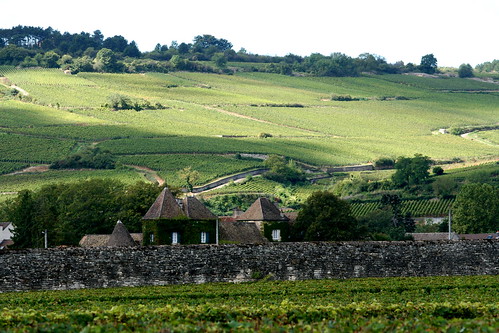
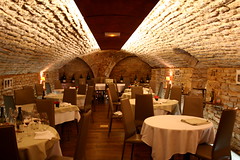 In the evening, descend into one of the dozens of ‘cellar’ restaurants that could double as barrel rooms to undoubtedly enjoy fine wines and gourmet food from the region: foie gras, escargots, coq au vin and boeuf bourgignon cooked a la bourgignonne in Burgundian wine.
In the evening, descend into one of the dozens of ‘cellar’ restaurants that could double as barrel rooms to undoubtedly enjoy fine wines and gourmet food from the region: foie gras, escargots, coq au vin and boeuf bourgignon cooked a la bourgignonne in Burgundian wine.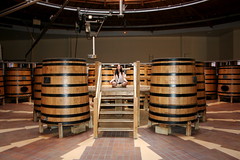 Visiting Louis Jadot was a fantastic experience. We received a very warm and intimate welcome from one of the prominent producers of this region. Jadot has the power of the qi. The winery is in the shape of an octagon, at the heart of which a small platform is perched six feet off the ground under a domed skylight. During long harvest days this is the spot where workers come to re-energize.
Visiting Louis Jadot was a fantastic experience. We received a very warm and intimate welcome from one of the prominent producers of this region. Jadot has the power of the qi. The winery is in the shape of an octagon, at the heart of which a small platform is perched six feet off the ground under a domed skylight. During long harvest days this is the spot where workers come to re-energize. There is no better welcome to a Domaine than that from a Grand Cru Chardonnay-eating Golden Retriever. Domaine Comte Senard, located in Aloxe-Corton, is set high up on the Côte with its Grand Cru sites enclosed by an ancient stone clos. They produce the only red Grande Cru in the Côte de Beaune. Comte Senard owns the oldest cellars in Burgundy which they discovered during an expansion, and in their good fortune unearthed intact bottles from the region – what a coup.
There is no better welcome to a Domaine than that from a Grand Cru Chardonnay-eating Golden Retriever. Domaine Comte Senard, located in Aloxe-Corton, is set high up on the Côte with its Grand Cru sites enclosed by an ancient stone clos. They produce the only red Grande Cru in the Côte de Beaune. Comte Senard owns the oldest cellars in Burgundy which they discovered during an expansion, and in their good fortune unearthed intact bottles from the region – what a coup.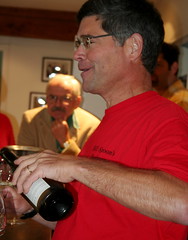 In contrast, we capped off our Domaine tours with a visit with Alex Gambal, a modern day Texan making modern wines in Burgundy. Who would have thought this was possible? With the Napoleonic Code of land inheritance, farmers rule this region. Alex Gambal has gracefully managed to penetrate the traditional political landscape. He shared some of his tales of trials and tribulations of doing business here where verbal contracts are only as good as the Texan pony he rode in on.
In contrast, we capped off our Domaine tours with a visit with Alex Gambal, a modern day Texan making modern wines in Burgundy. Who would have thought this was possible? With the Napoleonic Code of land inheritance, farmers rule this region. Alex Gambal has gracefully managed to penetrate the traditional political landscape. He shared some of his tales of trials and tribulations of doing business here where verbal contracts are only as good as the Texan pony he rode in on.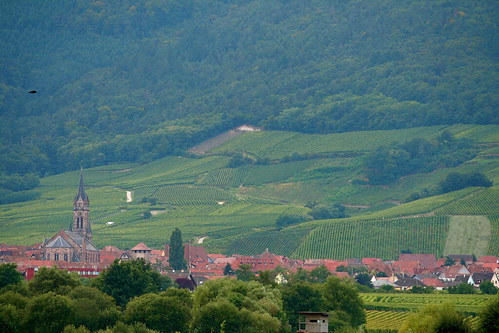
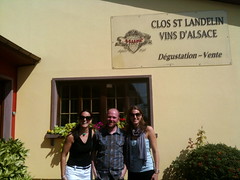
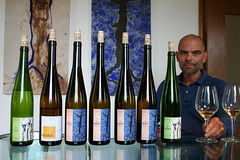

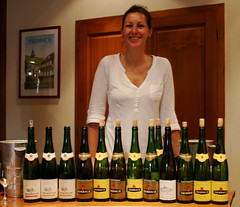







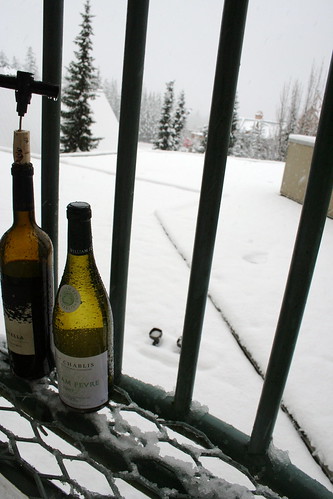
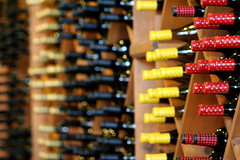

 Warning: When tasting delectable wines in a
Warning: When tasting delectable wines in a